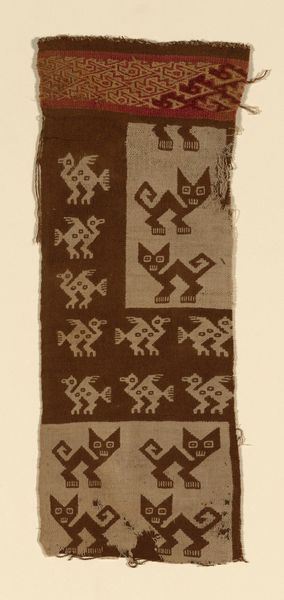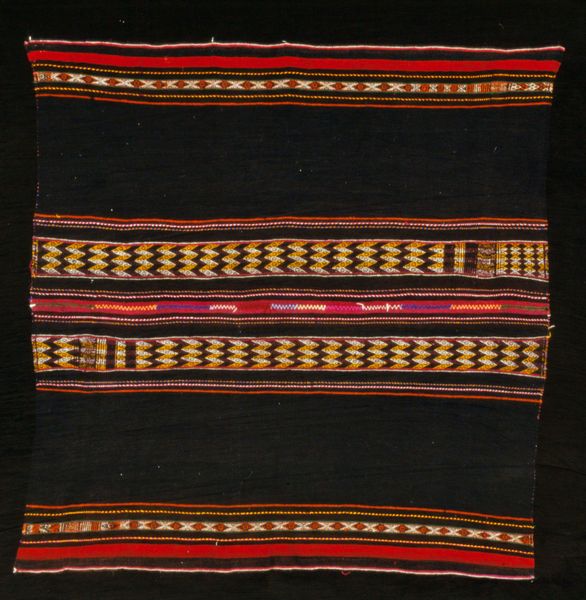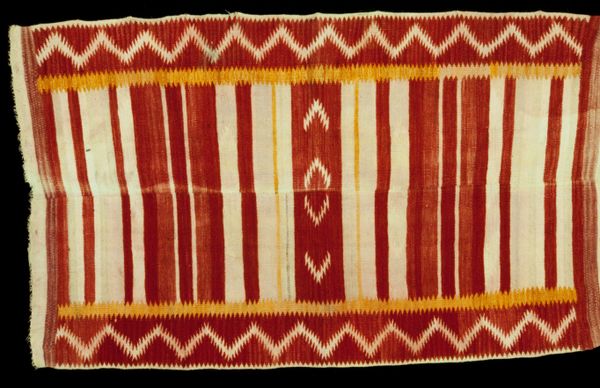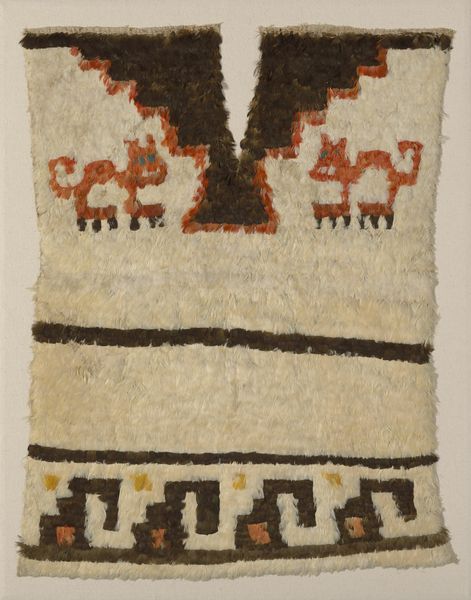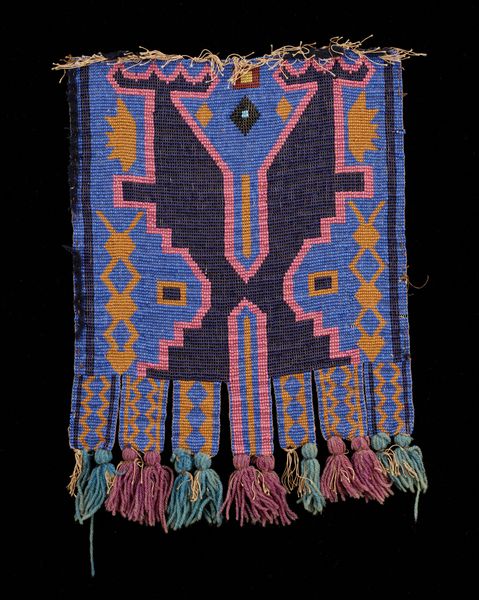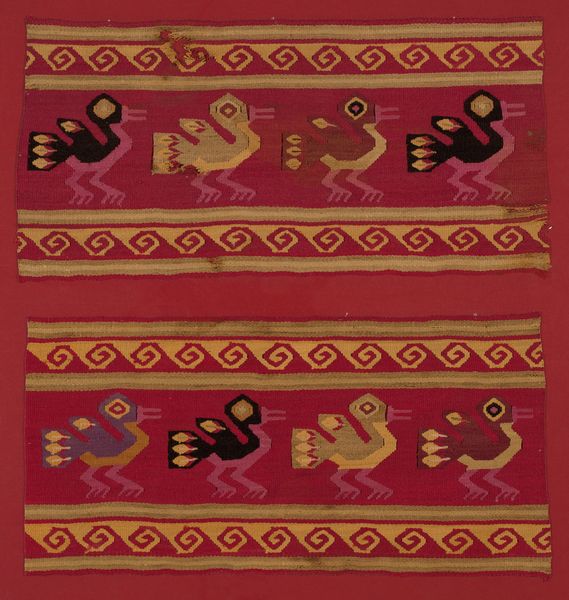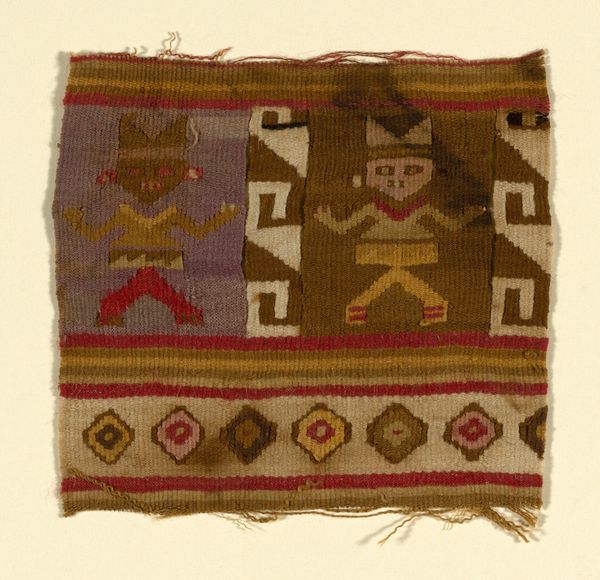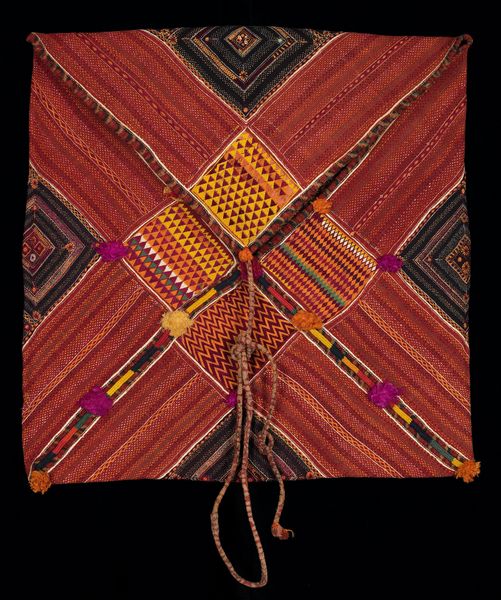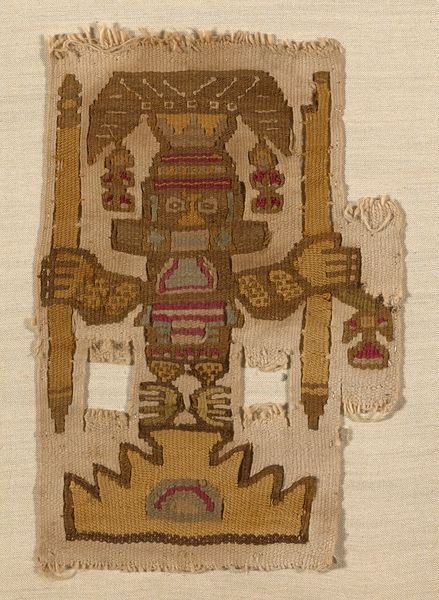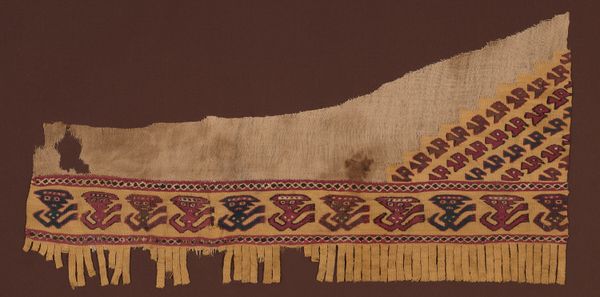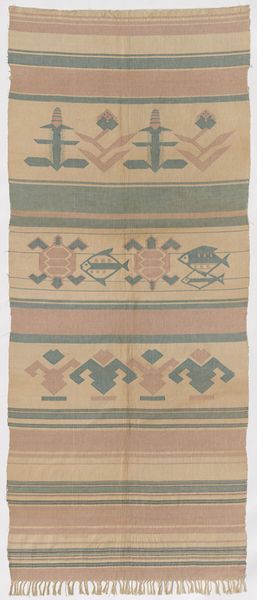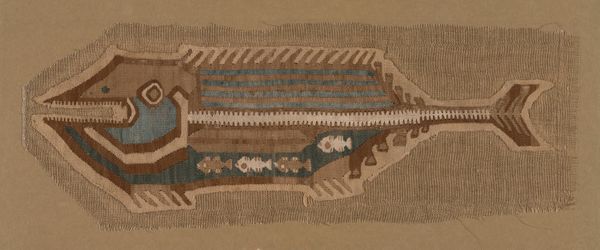
weaving, textile
#
weaving
#
textile
#
indigenous-americas
Dimensions: 13.3 × 54.3 cm (5 1/4 × 21 3/8 in.)
Copyright: Public Domain
Curator: Welcome. Here we have a fragment of a weaving by the Chancay people, dating possibly between 1000 and 1476. Editor: Well, it’s certainly striking. Those figures—are they birds?—have such a bold, graphic quality. Almost playful, despite the fragment’s age. Curator: The textile itself tells a story. Chancay textiles held significant cultural value. Beyond mere utility, weaving was deeply woven into social structures, marking status and communicating beliefs within the Chancay community. Editor: You can definitely see that careful, deliberate structure. The horizontal stripes create this rhythm that both contains and emphasizes the figures, right? It almost flattens them against the ochre ground, like symbols within a defined field. Curator: Exactly. The imagery likely carried symbolic weight, though the specific meaning of these bird-like figures with what appear to be fish tails is now somewhat elusive. Similar designs have been found on pottery. Editor: I see how the geometry—those precise triangles, the carefully placed lines in the bird’s eyes— contributes to a powerful, almost codified, sense of representation. Do you think this pattern indicates repeated figures for trade? Curator: Possibly. Remember that surviving Chancay textiles were commonly used as burial shrouds, bundled with grave goods to help prepare the dead for their journey into the afterlife. Editor: It makes me consider the physical process of creating it. Someone’s hands, patiently interlacing these fibers, following patterns passed down, perhaps. You know, I appreciate its presence in a space like this; these textiles transform the museum space with something that is both archaic and surprisingly fresh. Curator: Agreed. It allows us to meditate on our assumptions surrounding craft, function, and the artistic impulses of a pre-colonial society. Editor: Right, there is an inherent value of an object so delicate with an abstract expression, to still exist today, it must be special. Curator: Definitely. What strikes you most about it now? Editor: How alive it feels. Like this little snippet from the past continues to speak.
Comments
No comments
Be the first to comment and join the conversation on the ultimate creative platform.

